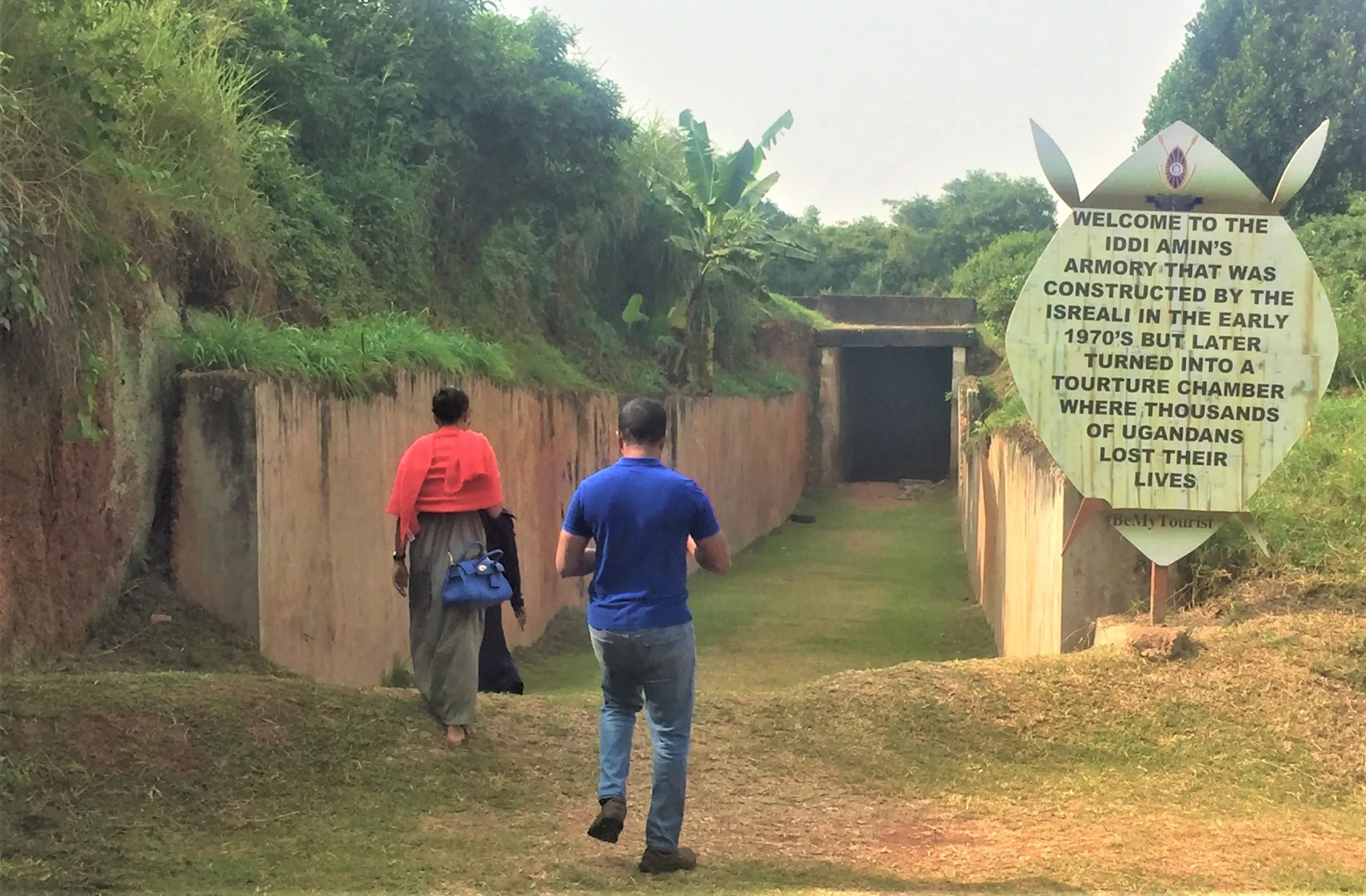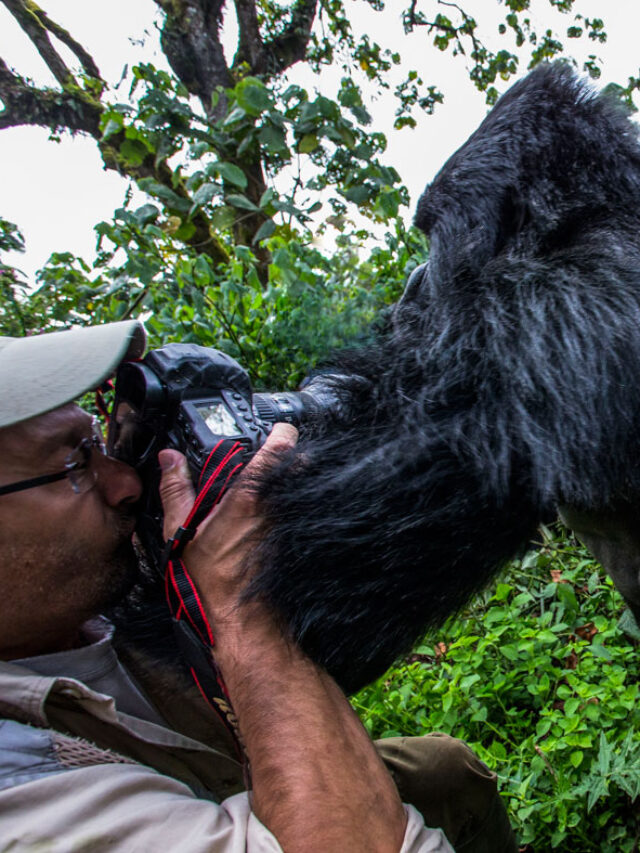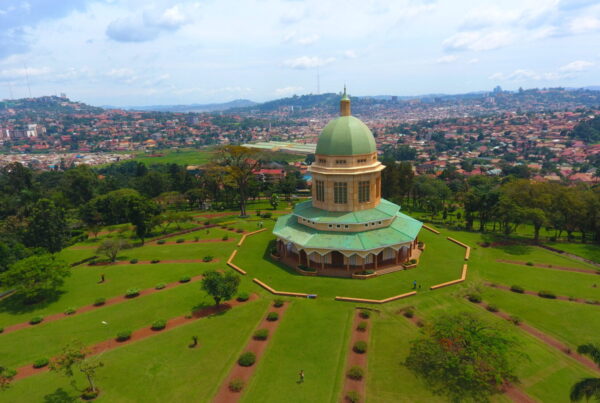Amin’s Torture Chambers in Kampala: A Deep Dive into Uganda’s Darkest Chapter
Amin’s Torture Chambers in Kampala — When you think of Uganda’s capital city, Kampala, vibrant markets, bustling streets, and rich cultural life often come to mind. Yet, hidden beneath this lively exterior lies a painful, haunting history from the 1970s—one of terror, fear, and unimaginable cruelty. This is the legacy of Idi Amin Dada, Uganda’s military dictator whose reign from 1971 to 1979 left the country scarred in countless ways. Among the most harrowing reminders of his regime are the torture chambers scattered throughout Kampala—places where thousands of Ugandans endured brutal interrogations, unspeakable abuses, and often death. Exploring this dark facet of Kampala offers not only a glimpse into a painful past but also a powerful lesson about resilience, remembrance, and the importance of justice.
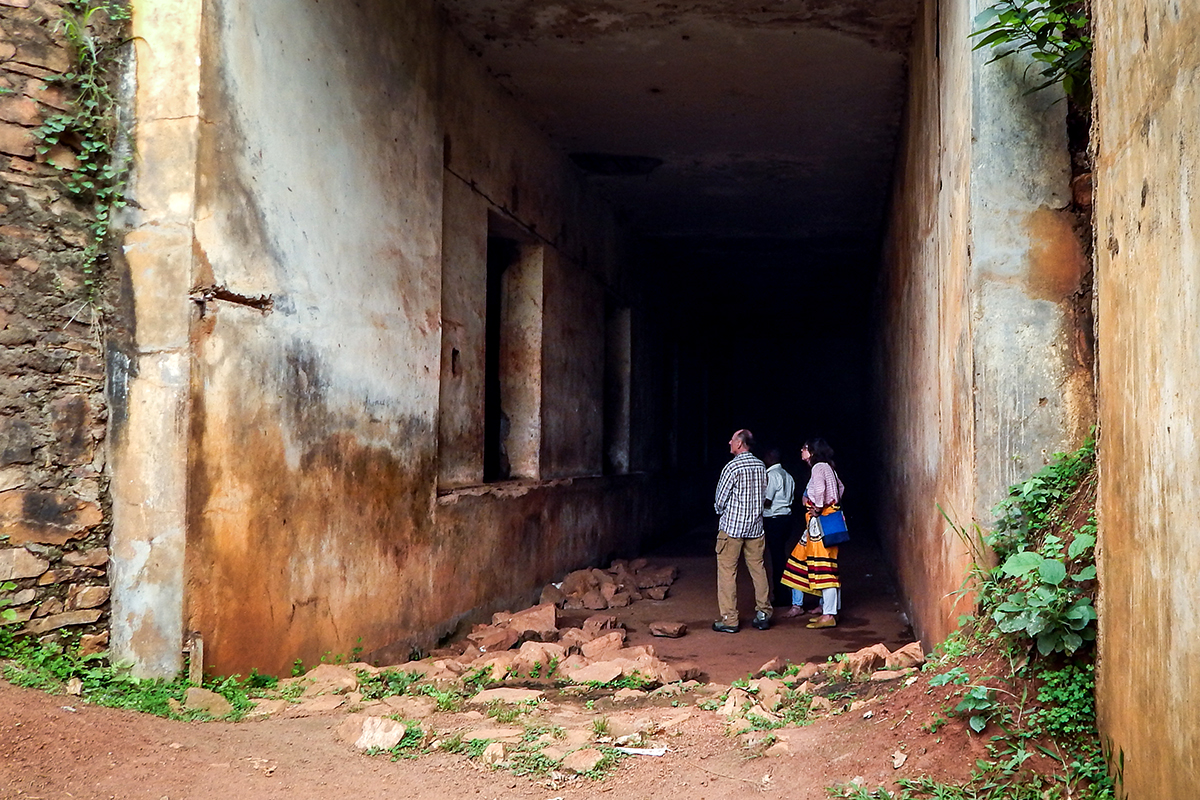
Tourists visit Idi Amin’s Torture Chambers or Lubiri Palace, in Kampala, the capital of Uganda March 15, 2017.
The Rise of Idi Amin and the Birth of Terror in Kampala
Idi Amin seized power abruptly in 1971, toppling Milton Obote’s government through a military coup. What followed was a reign characterized by paranoia, violent suppression of dissent, and widespread human rights abuses. Amin’s rule was not just about controlling a nation politically; it was about instilling fear so deeply that opposition would be crushed before it even began. Central to this system of terror were the torture chambers he established, particularly in Kampala, which became the epicenter of his oppressive regime.
The State Research Bureau (SRB), Amin’s secret police, operated some of the most notorious torture facilities in the city. The SRB was tasked with rooting out any potential threats—real or imagined—and their methods were ruthless. Anyone suspected of opposing Amin could be arrested without cause and taken to these secretive locations for interrogation. The word “torture chamber” evokes images of medieval cruelty, but in Kampala during Amin’s rule, it was a grim reality. Prisoners faced beatings, electric shocks, mutilation, and psychological torment. Many never emerged alive.
The Locations and Nature of Amin’s Torture Chambers in Kampala
Unlike official prisons, these torture chambers were often hidden within ordinary buildings—government offices, warehouses, and even private homes repurposed for this dark function. The most infamous was the SRB headquarters, known locally as a place of unspeakable suffering. Today, many of these buildings remain standing, their facades giving no clue to the horrors that once occurred inside. Some have been demolished or converted to other uses, but the shadows of their past linger strongly in local memory.
Inside these chambers, detainees were isolated, kept in small, dark rooms, often chained or shackled. Torture was not only physical but psychological—prisoners were subjected to intense fear, uncertainty, and the constant threat of death. The objective was to break their will completely, often to force false confessions or to intimidate others into silence. Witness accounts speak of screams echoing through the city streets, a chilling testament to the terror inflicted behind closed doors.
Personal Stories of Survival and Loss
What makes the story of Amin’s torture chambers especially poignant are the personal testimonies from survivors and families of victims. These narratives reveal the human cost behind the statistics of those killed or disappeared during his regime. Many who endured torture have recounted how hope and resilience sustained them amid unimaginable pain. Others never returned, their fates unknown, buried in mass graves or lost in the chaos of those brutal years.
Such stories are vital because they humanize history. They remind us that the victims were ordinary Ugandans—teachers, students, civil servants, soldiers, and even members of Amin’s own administration—who fell prey to a regime obsessed with power and control. Remembering their suffering is essential for healing and for honoring the courage of those who resisted oppression.
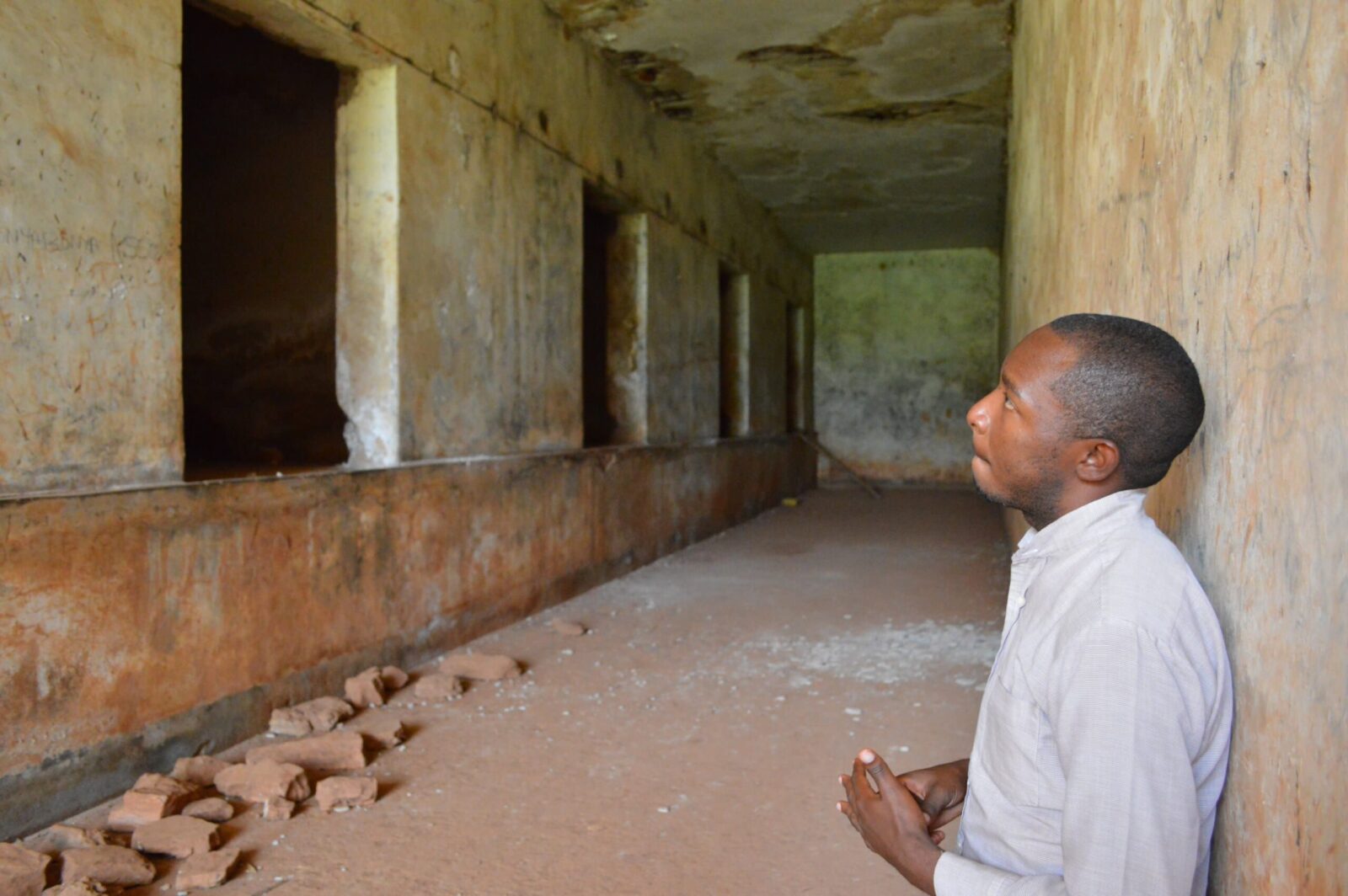
Visiting Amin’s Torture Chambers Today: A Journey Through Memory
Today, visiting the sites associated with Amin’s torture chambers in Kampala is a sobering, deeply emotional experience. While many sites lack formal museums or plaques, local guides and historians provide invaluable insights and narratives that bring this history to life. Walking through these neighborhoods, you sense the weight of the past, the ghosts of those who suffered, and the enduring spirit of a community that has chosen to remember rather than erase its painful history.
Some organizations and activists in Uganda have worked to raise awareness and preserve the memory of this dark period. Memorials, exhibitions, and educational programs aim to ensure that the atrocities committed under Amin’s rule are never forgotten. These efforts also serve to warn future generations about the dangers of dictatorship and unchecked power.
For visitors, this experience adds profound context to Uganda’s current story—a nation that has overcome tremendous adversity and continues to strive for justice, peace, and democracy. It is a testament to human resilience and the capacity for renewal after trauma.
The Importance of Remembering Amin’s Torture Chambers
Why should we remember these torture chambers? Beyond the historical facts, they represent a crucial lesson about the fragility of human rights and the need for vigilance against tyranny. Amin’s regime reminds us how quickly a country can descend into brutality when institutions are dismantled and fear governs society. Acknowledging this history is part of Uganda’s healing process and an important contribution to the global conversation on justice and human dignity.
Visiting these sites and learning their stories is not about dwelling in the past but about honoring those who suffered and celebrating the strength that enabled Uganda to move forward. It also calls on all of us—whether Ugandan or global citizens—to stand against oppression in all its forms.
How to Book a Tour to Amin’s Torture Chambers in Kampala
Unlike mainstream tourist attractions, Amin’s torture chambers are not always organized as formal, widely advertised tours. Instead, most visits are arranged through local history experts, NGOs focused on human rights and historical preservation, or specialized tour operators in Kampala who offer historical or dark tourism experiences.
The best way to book a tour is to connect with a reputable local guide or company that specializes in historical tours of Kampala. Many guides are knowledgeable about the exact locations related to Amin’s regime and can provide detailed narratives, survivor stories, and context that enrich your visit. You can find these guides through hotel concierge services in Kampala, trusted travel forums, or tour agencies that promote cultural and historical excursions.
Because the sites are sensitive and often not maintained as traditional tourist spots, private guided tours are recommended. These can be tailored to your interests, including visits to the State Research Bureau building (where many torture chambers were located), sites of mass graves, and other key locations linked to Amin’s reign.
Cost of Touring Amin’s Torture Chambers in Kampala
Tour prices can vary widely depending on the level of customization, duration, and the guide’s expertise. Typically, a half-day private guided historical tour focusing on Amin’s torture chambers and related sites in Kampala will cost between $40 and $100 USD per person. This usually includes transportation within the city, entrance fees (where applicable), and the services of a professional guide.
If you opt for a more comprehensive full-day tour, combining Amin’s torture chamber sites with visits to museums or memorials that explore Uganda’s post-Amin history, the price may range from $100 to $150 USD per person.
Some tours may also include visits to survivor centers or NGOs working on human rights education, which can add a powerful layer of understanding to your trip. Always clarify what is included in your tour package and whether meals, transport, or any entry fees are covered.
Important Tips for Booking and Visiting
Because the subject matter is sensitive and emotionally intense, it’s important to approach your visit with respect and awareness. Book through reputable operators who emphasize ethical tourism and historical accuracy. Engaging with local guides who are passionate about sharing Uganda’s history ensures a more meaningful and respectful experience.
Confirm the credentials and reviews of your guide or tour company before booking. Some NGOs and historical projects may also offer special group tours or educational sessions, which can be an excellent option if you want a deeper understanding.
It’s advisable to arrange your tour in advance, especially during Uganda’s peak tourist seasons, to secure your preferred dates and times. Many tour companies accept online inquiries or bookings through email or WhatsApp, making it easy to plan even if you’re not yet in Uganda.

